So, basically every cathedral they've built on this location has burned down, and yet, they decided to put up yet another one. This one was designed by Sir Christopher Wren, who also designed the Old Naval College at Greenwich (to see that, you'll have to go back about 5 weeks to my older posts) and Hampton Court Palace (go back a week to see that post), so this guy knows what he's doing. Now, this cathedral that Wren designed is absolutely gorgeous, both inside and outside. Unfortunately, photos aren't allowed inside, so you'll have to just deal with pictures from Google.
Now, as soon as you walk into the nave, your eyes are drawn all the way down to the quire (where the choir sits) and the altar. Along the ceiling there are three magnificent mosaics made of bits of glass. We'll go back to them in a second. As you walk along the nave, you come under this magnificent dome. This dome is 365 feet tall and one of the largest cathedral domes in the world. Along the bottom of the dome is the Whispering Gallery, where apparently one person can stand on one end of the dome and another person on the other and if they whisper they can hear each other. Two guys were there trying it out, but I don't know if they got it to work or not. All along the bottom of the dome are beautiful mosaics showing the lives of the prophets and apostles.
Just past the dome is the quire. This is where the choir sits and performs for all church services. The choir is made up of boys who go to the cathedral school, along with a few grown men to sing the lower ranges. When I was there for Evensong, we'll come back to this, it was a much smaller choir, only about 16 people. You can see the full choir perform below. This was a thanksgiving service to honor the late Queen Mother's 100th birthday.
Now, the composer George Frederick Handel (who wrote "Messiah") used to LOVE the organ in the quire, probably because it was a pedal organ, which was rare at the time in England. The current organ in the quire is the third largest in the United Kingdom with 7,256 pipes, 5 manuals and 138 stops.
Near the quire is a gorgeous painting by William Holman Hunt called "Light of the World." Painted in around 1900, it shows Christ holding a lantern showing how is the "Light of the World," which goes back to the verse John 8:12 when Christ says, "I am the light of the world. Whoever follows me will never walk in darkness, but will have the light of life." He is knocking on a door, but there isn't a doorknob on the door, which shows that you have to let him into your life, he can't just walk in. Of course, the painting is so much prettier in person, but this is a pretty accurate depiction of it.
Above the quire are three huge mosaics, like I said before, and they are made of bits of glass. They portray the creation of the Earth. The one of the left hand side is the creation of air, the middle of water and finally the right hand side shows the creation of the animals.
This is a close up of the animals mosaic. It includes exotic animals such as lions, kangaroos, etc. These mosaics were created after Queen Victoria once complained that St. Paul's was "dull, dingy and undevotional." The mosaics were installed from 1896-1904, so Victoria didn't get to see the end result, she died in 1901.
Here is another view of the mosaics just to show you how bright and colorful they make the quire and the cathedral as a whole.
Just past the quire is the high alter, pictured above. It's a huge structure that dates back to 1958. This obviously isn't the original high altar, but it's much closer to Wren's original design. The original altar was destroyed by a bomb during World War II, but this piece is absolutely stunning.
Behind the high altar is the Jesus Chapel, or the American Memorial Chapel. This was put in as the cathedral was restored during World War II. During the Blitz, areas around the cathedral were on fire, and apparently Winston Churchill called up the fire marshall and gave them strict instructions to save the cathedral "no matter what." Thankfully, they were successful. Parts of London still have scars from the Blitz, but it's a miracle that all the historical buildings survived. Anyway, this chapel commemorates the 28,000 Americans who were killed on their way to, or while stationed in the United Kingdom during World War II. There is a huge book (visible in the case in the bottom left hand corner of the picture) with all the names, and, each day, one page of the book is turned so every soldier gets to have their name showing; it's called the American roll of honor. There is also a copy of the book tucked away so family members of those soldiers can see their loved one's name if they want.
Now, before we continue I want to make one thing clear, I'm absolutely terrified of heights. I didn't do the London Eye because of this, and I hate driving on the Bay Bridge to go to and from school. I can handle heights in certain situations, but not always. Despite all this, I decided to climb to the top of the dome. Yeah, I know, this sounds like a good idea for someone like me.
The first leg of the journey takes you to the Whispering Gallery at the base of the dome. We already talked about this, so I'm not going to go into too much detail about it. You can look down into the cathedral, which was pretty cool. This part was 257 steps (they weren't very steep thankfully) or 98 feet up.
Next stop is the Stone Gallery, which is an exterior walkway around the top of the dome. It's a pretty wide walkway, which was nice, at least for me. And it did have a wonderful view of London. In the distance of the picture above you can see the Shard, which will be the tallest building in Europe when it's completed (it'll be 1,012 feet tall). The Stone Gallery is a total of 376 steps (that includes the 257 to the Whispering Gallery) or 173 feet up. Not that bad, so far I hadn't had a complete breakdown with the height.
You'd think this would be it, but no, there's more. The stairs above are basically what you walk up to get to the last viewing platform. I figured that I'd come this far, I couldn't turn back now. Unfortunately, I didn't know that it was quite that terrifying. Luckily there was nobody behind me, so I was free to go at my own incredibly slow pace as I worked up the courage to continue to the top.
The Golden Gallery, the very last gallery. It's a grand total of 528 steps up from the very bottom and 278 feet tall. Now this viewing platform was fairly narrow, and I was starting to get uncomfortable. Luckily I couldn't see straight down to the bottom, the rest of the cathedral was in the way, and that's usually when I start to get uncomfortable. I did get some gorgeous views. This above picture is the Globe Theatre, Millennium Bridge, the Tate Modern and the City of London School. It was absolutely breathtaking. The journey back down wasn't as bad, but in addition to having a fear of heights, I am INCREDIBLY uncoordinated and tend to trip/fall/walk into things a lot more than I'd like to meet, usually in public too (for the record, I've only fallen once while here, knock on wood). So, the stairs down are really narrow (as in barely wide enough for a normal person to fit down), are small, and don't always have a railing. Yeah, this is a wonderful idea for a person like me. Somehow, I managed to get up to the top and back down without hurting myself or having a complete breakdown, so I'm going to call that adventure a success.
Just to give you a sense of where the two exterior galleries are on the dome, here's a picture that I've labeled. Yeah, I went all the way up, it was...interesting.
Once I got back down to the ground, I took a few minutes to just sit and catch my breath before continuing on the tour, which took me, thankfully, below ground to the crypt. St. Paul's has served as a place of several notable funerals, we'll come back to this, but only 2 figures of real importance are actually buried here.
First is Lord Admiral Horatio Nelson, who is memorialized in Trafalgar Square (he's the one on top of the huge column there). Lord Nelson was killed at the Battle of Trafalgar in 1805, and his body was preserved in a barrel of alcohol until they could get him back to England. He was given a state funeral and even laid out in Greenwich at the Old Naval College (you can see that in one of my very first posts in London). Now, we've made it this far into a post without talking about Henry VIII, but you know you were expecting him to pop up at some point, and, believe it or not, it's right now. The black marble used for Lord Nelson's tomb was originally meant to be for Cardinal Wolsey, Henry's most trusted adviser for the first few years of his reign. When he couldn't get Henry a divorce from his first wife, Catherine of Aragon, however, Wolsey fell from favor, and the black marble was basically put into storage for a little under 300 years. When Lord Nelson died, they pulled it out and figured they might as well make use of it and used it for his tomb.
Another person of importance buried in St. Paul's Cathedral's crypt is the Duke of Wellington, who beat the French in another battle, Waterloo, which ended Napoleon's attempt to return to the throne once and for all. He is buried in the crypt in this simple tomb.
There are several memorials of note in the crypt as well. Although they're not actual tombs, there are memorials to Winston Churchill, William Blake, John Everett Millais, Randolph Caldecott (you've probably heard of the Caldecott Medal for children's books illustrations), Sir Alexander Flemming (discoverer of penicillin) and Florence Nightingale. Sir Christopher Wren, designed of the cathedral, is buried here as well.
Two funerals of real note have been held at St. Paul's Cathedral. Winston Churchill's funeral was held here on January 30, 1965. He had died on January 24, 1965, at the age of 90 and 70 years to the day since his father's death. Elizabeth II had his body lay in state for three days before the funeral.
Above is a video from YouTube on the funeral. The quality isn't that bad, and it's pretty interesting, so please enjoy.
Another funeral of note is Princess Diana's. Her funeral was also held in St. Paul's Cathedral after the tragic accident in Paris while she was being followed by paparazzi. I couldn't really find too many pictures of the funeral, but this video is pretty good and gives you a taste of what the cathedral looks like as well.
Roughly fifteen years earlier, all eyes had been on St. Paul's Cathedral for a far happier reason, it was where Princess Diana married Prince Charles in a gorgeous ceremony. The marriage didn't last, but they certainly put on a wonderful wedding. Another wedding of historical significance that happened at St. Paul's was the marriage between Katherine of Aragon and Arthur Tudor, Henry VIII's older brother. This marriage gave Henry grounds for a divorce, since he claimed that that marriage made Katherine his sister, and therefore he shouldn't have married her at all, so he should divorce her and marry Anne Boleyn (we all know how that marriage turned out). That was at the Old St. Paul's Cathedral, but it was in the same location. Henry himself walked Katherine down the aisle, not knowing that he'd be marrying her himself in just a few short years.
I want to talk about one last thing, the Geometric Stairs. These are a gorgeous winding staircase where a scene from Harry Potter and the Prisoner of Azkaban was filmed. In the movie, the students have to go all the way up one of Hogwarts' towers to take Divination (palm reading, crystal balls, etc), and they used these stairs to film that scene. On that note, I'm going to wrap this post up. Until next time!
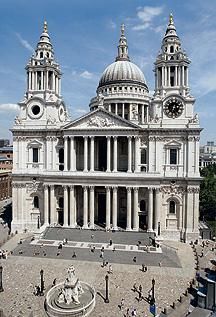



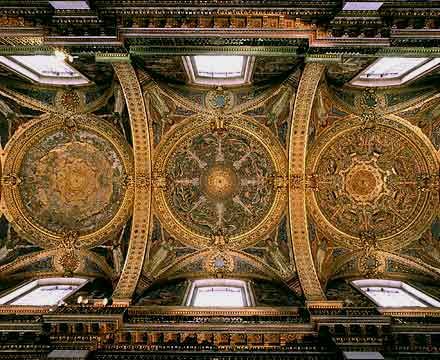
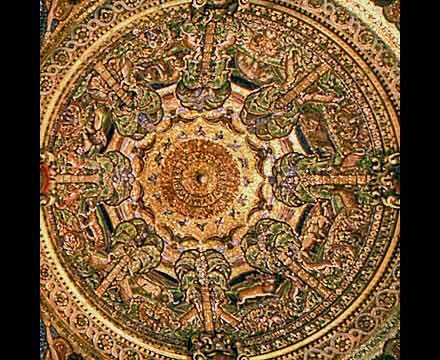
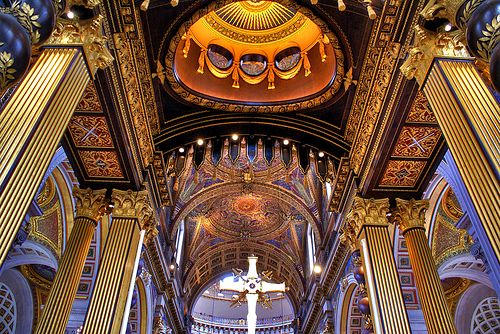


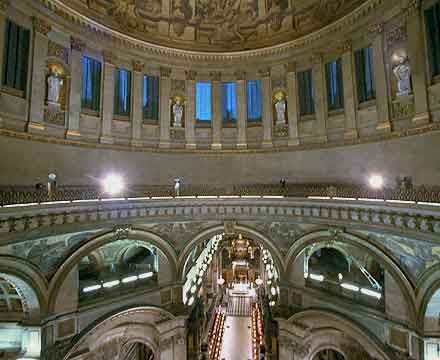

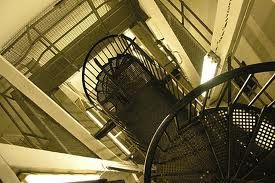


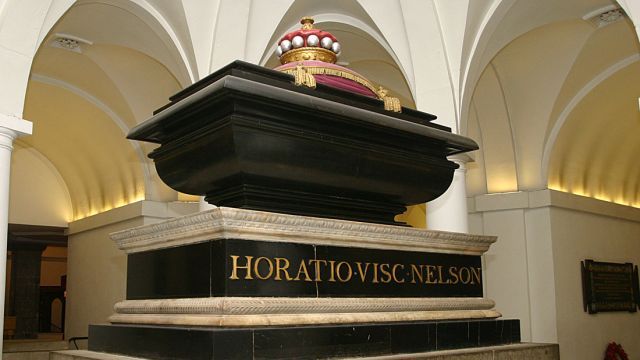
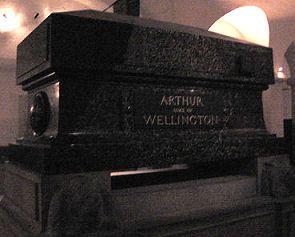

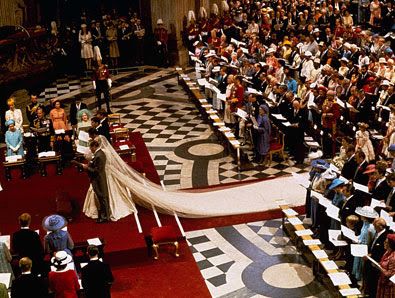
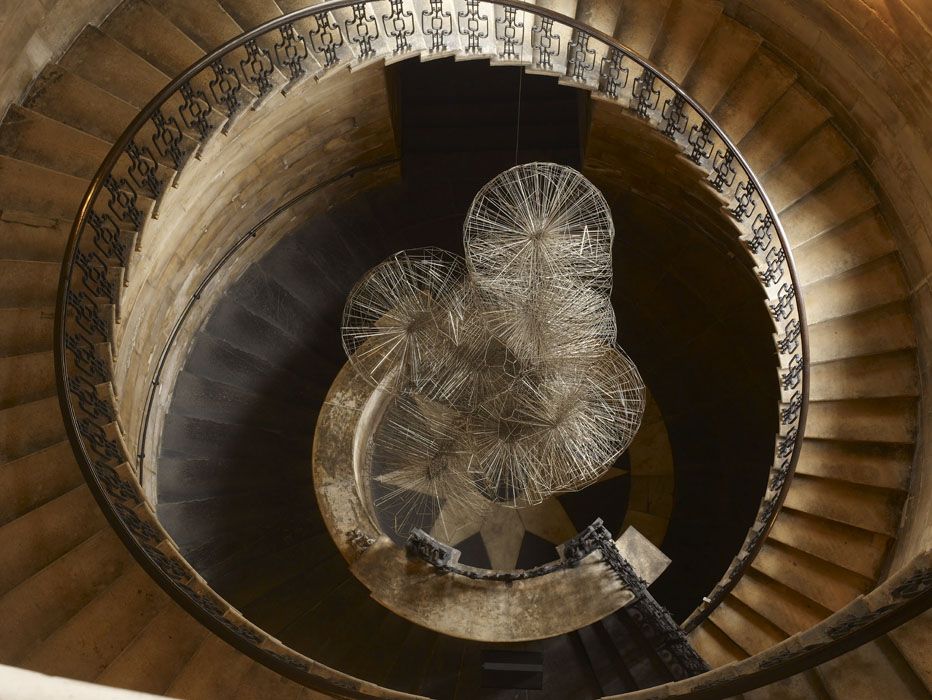
No comments:
Post a Comment